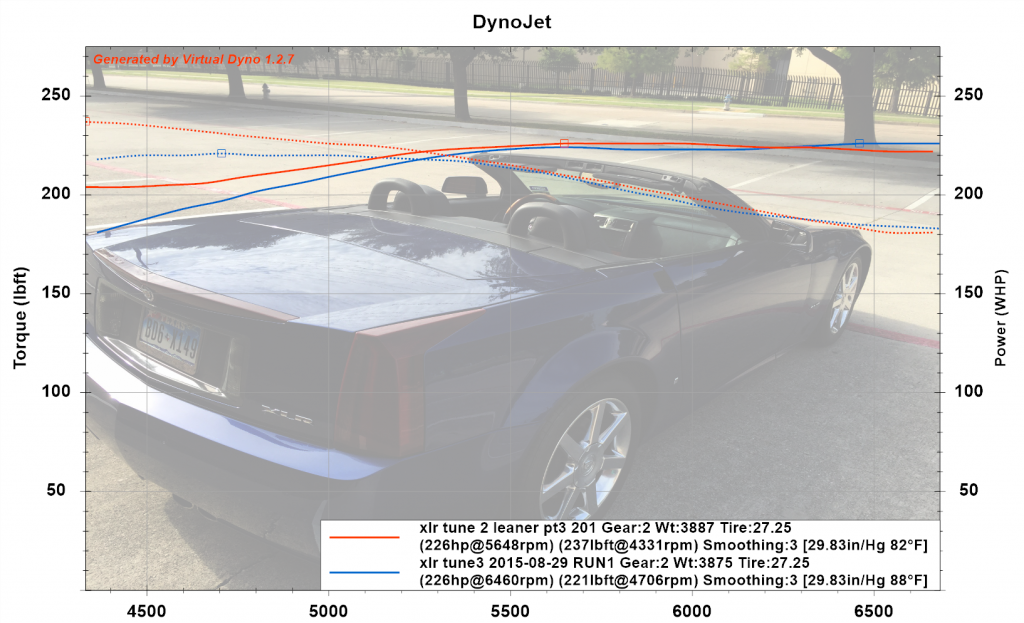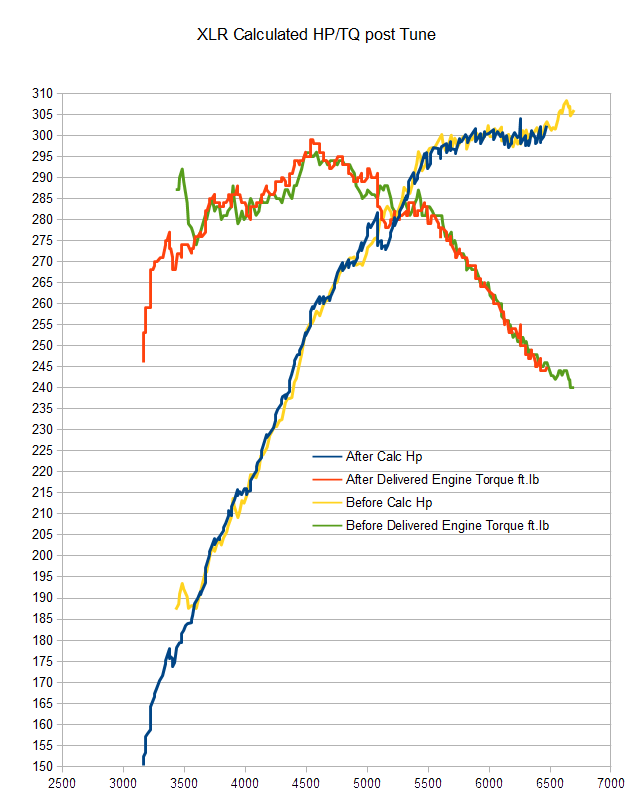[Title corrected to read slightly LEANER – 12.5 to 12.8 commanded]
I am in the process of tuning my 2007 Cadillac XLR with HpTuners and Virtual Dyno. For each test a known tune is loaded, then the car is tested for 2 runs, basically 4000 rpm to redline in 2nd gear in a consistent manner under known conditions. The results are then analyzed on Virtual Dyno and the calculated hp/torque from the engine PCM for reference.
Today’s tune sets the AFR stoich back to 14.7 (baseline), and moved the PE to 1.148 (12.8 commanded – baseline is 12.5). The IAT and ECT advance values were restored to OEM. The net effect is testing 0.3 AFR points leaner than baseline.
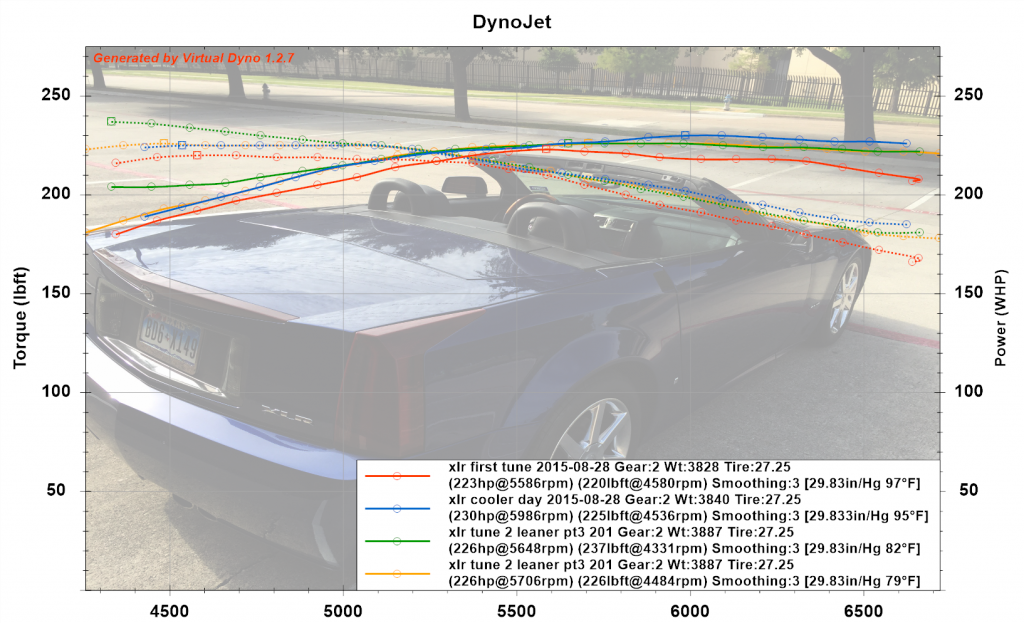
[click to zoom in, back to return]
This morning we had cool air (79F-82F), and I reset the gas tank to full so known weight.
The red run is tune1, blue is baseline, green and yellow are today’s runs. What the results show is that today’s tune2 runs were better than tune1 but worse than baseline. The average for today’s runs 226 whp, 231 lbft compared to baseline 230/225.
Virtual Dyno corrects for the temperature variance, by using barometer and intake air temperature. If I remove that correction and zoom in the chart a bit to emphasize differences, today’s runs and baseline are similar and Tune1 is the outlier.
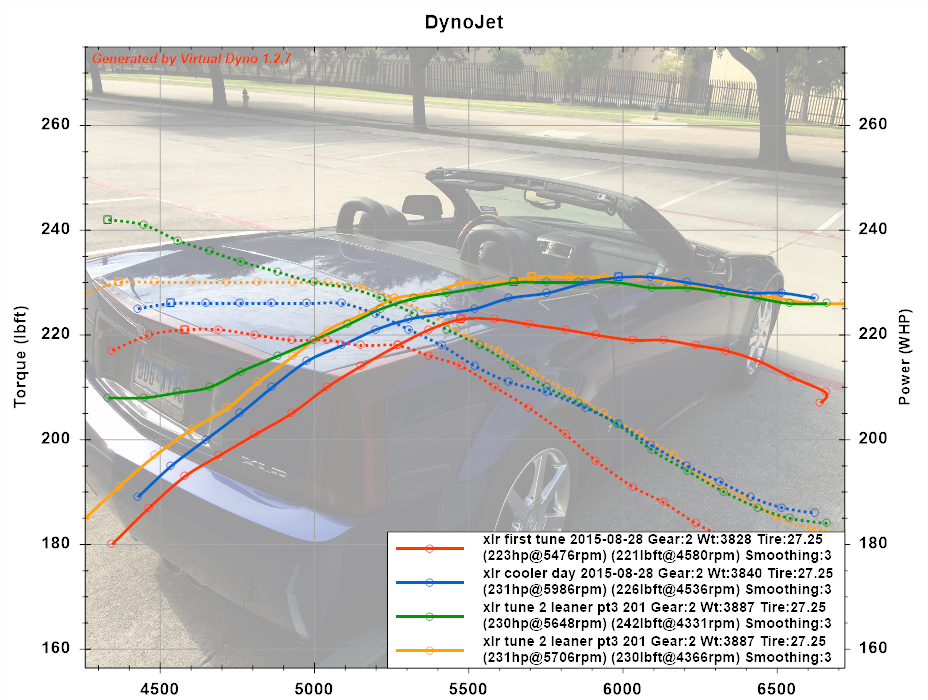
Then today’s runs are clearly better than baseline at lower RPM and equivalent at higher RPM.
Keep in mind in the Fueling the LH2 adds 0.5 AFT at 6000 RPM for piston protection, so it goes richer at that point by 0.5 commanded.
The Calculate HP absolutely jumped up and down and cheered at today’s tune:

The highest numbers I have seen for calc Hp for the XLR LH2. Perhaps due to the cooler air? Peaks 318.7 hp at 6642 rpm, 311 lb ft at 4426 rpm.
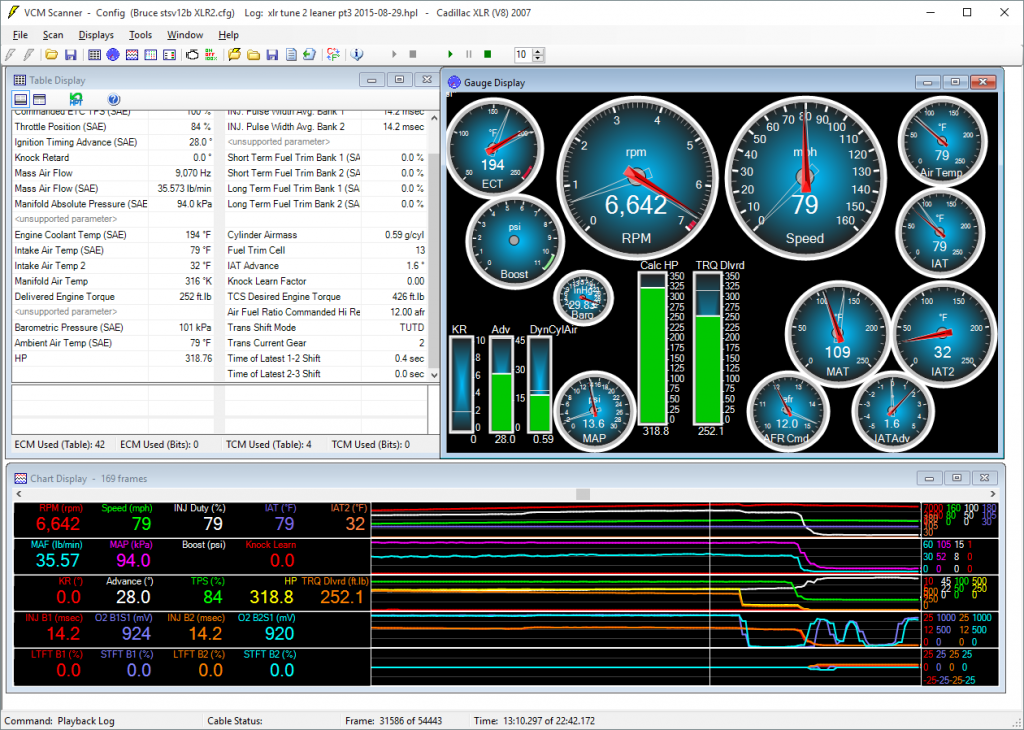
HpTuners output at peak HP
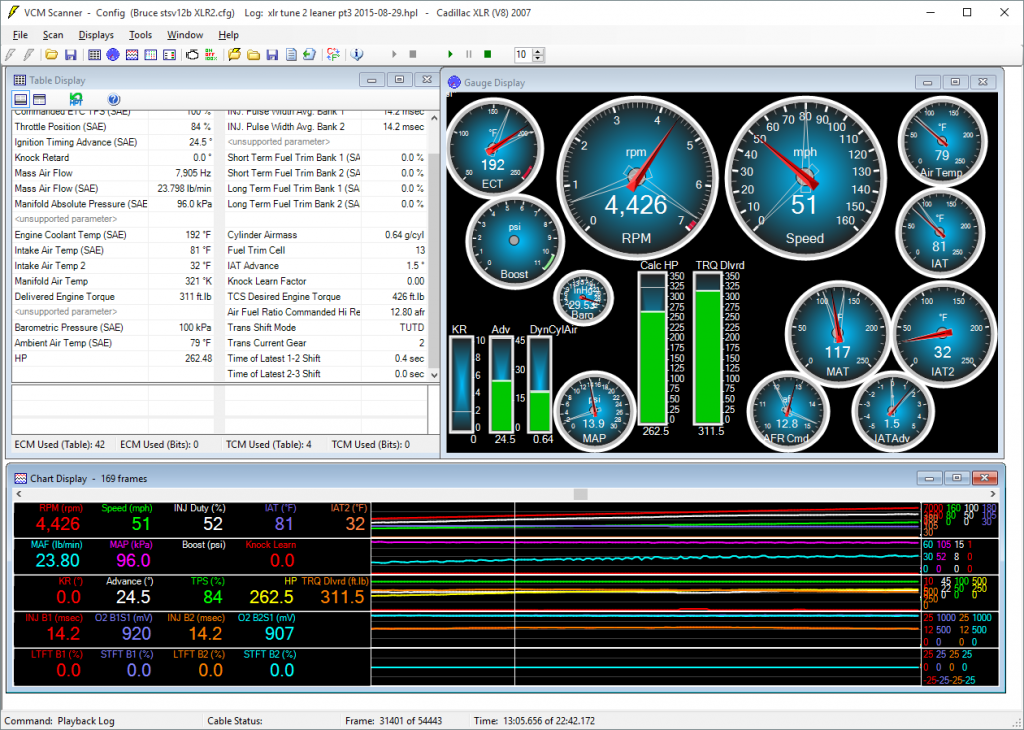
HpTuners output at Peak Torque
I plan to keep this tune in place and test hot — here in Texas it is easy to get a chance to do that — and use the hot/cold tests on the same tune to decide how to treat the SAE Virtual Dyno Corrections.
If you have any insights or advice or things you wish I would try please reply below!

